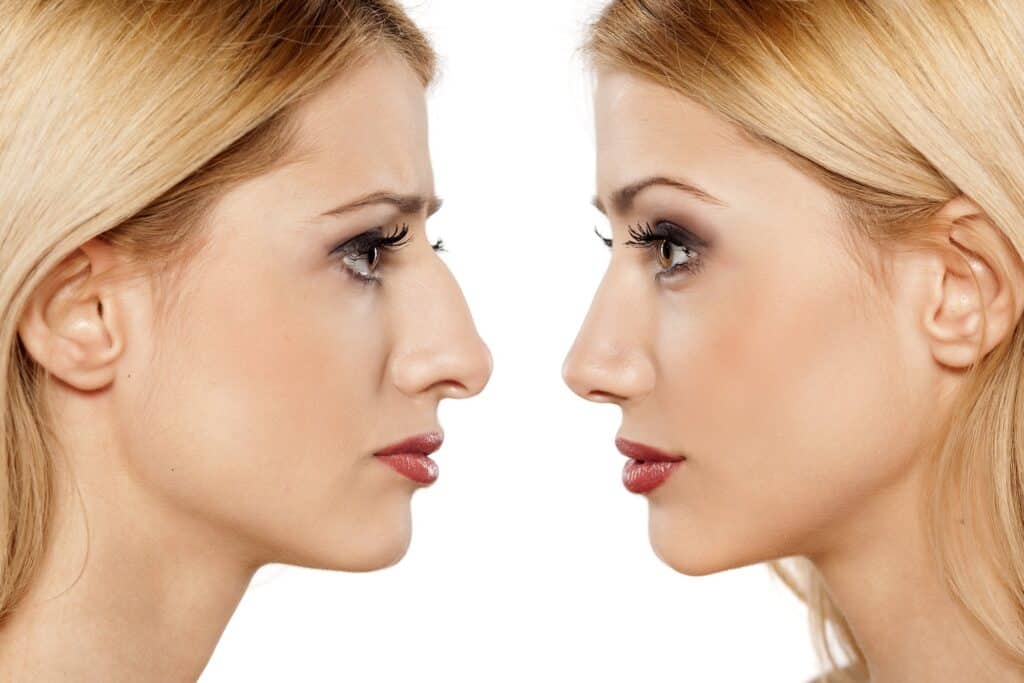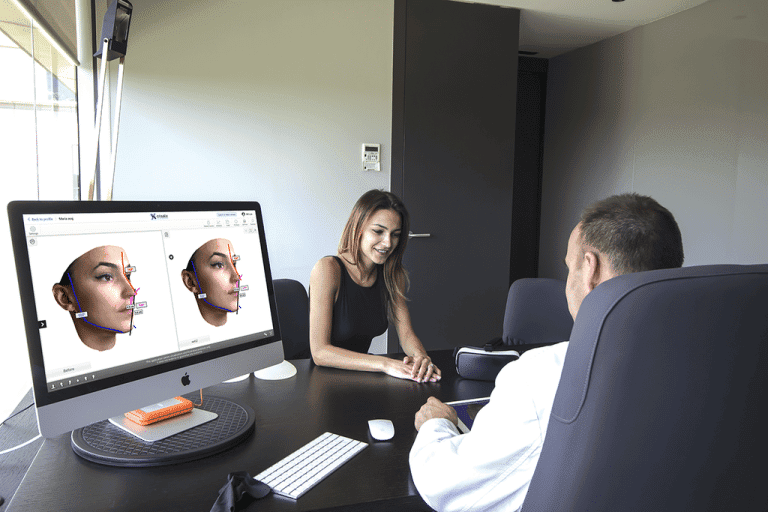From Discomfort to Delight: Progress in the Rhinoplasty Recovery Journey
Rhinoplasty, often referred to as a “nose job,” stands as a pivotal surgical procedure aimed at reshaping the nose for either cosmetic appeal or functional improvement. It delves into intricate alterations of bone and cartilage, underscoring the importance of precision in its execution. This surgery not only promises an enhanced facial harmony but also addresses breathing issues stemming from nasal structure anomalies. As individuals seek out this transformative procedure, understanding its scope, potential outcomes, and procedural nuances becomes essential. Navigating through rhinoplasty’s complexities requires thorough research and consultation with experienced surgeons to ensure desired results are met with utmost safety.
Reasons for Considering Rhinoplasty
Facial Harmony
Rhinoplasty can transform a person’s look. It reshapes or resizes the nose to match the rest of the face. This surgery might be what you need if your nose seems too big, small, or out of sync with your facial features.
People often choose rhinoplasty for a new look. They want their glasses to fit better or desire a more balanced appearance between their brow and chin. The goal is to enhance overall facial harmony.
Breathing Issues
Breathing problems can disrupt daily life. Structural defects in the nose are common causes. Rhinoplasty helps by correcting these issues.
Many people suffer from health concerns due to nasal blockages. Surgery offers them relief and improves quality of life. It’s not just about looks; it’s also about breathing easier and feeling healthier.
Injury Repair
Accidents happen, leading to nasal deformities that affect both look and function. Rhinoplasty repairs these injuries, restoring the original shape of the nose or even improving it.
Congenital irregularities present from birth also prompt this surgery need. For individuals living with such concerns, rhinoplasty provides a chance at correction and confidence boost.
Consultation Process for Rhinoplasty Procedure
Aesthetic Goals
The first step in the rhinoplasty procedure is discussing your aesthetic goals. You will talk about what you want to change. The surgeon listens closely. They offer advice on realistic outcomes.
Knowing what to expect is vital. The surgeon explains how your nose can look after surgery. This conversation helps align expectations with possible results.
Physical Examination
A thorough physical examination follows the initial discussion. This might include imaging tests like X-rays or MRIs. These tests help plan the surgery better.
The surgeon examines your nasal structure carefully. They consider skin thickness and facial symmetry too. All these details are crucial for planning a successful rhinoplasty procedure.
Medical History Review
Reviewing your medical history is an essential part of preparing for surgery.
- Medications: List all medicines you take.
- Allergies: Inform about any allergies, especially to anesthesia.
- Previous surgeries: Discuss any past surgical procedures, even if not related to rhinoplasty.
This information helps avoid complications during and after the procedure.
Anesthesia and Duration of Rhinoplasty Procedure
Anesthesia Choice
The choice between general anesthesia or local with sedation is critical. It depends on the complexity of the case. Your surgeon will discuss this with you during consultation. They consider your health, anxiety levels, and surgery details.
General anesthesia means you’ll be asleep through the procedure. Local anesthesia with sedation keeps you awake but relaxed and pain-free. Each has its pros and cons.
- General anesthesia:
- Pros: Complete unconsciousness, no memory of surgery.
- Cons: Longer recovery time, higher risk for certain patients.
- Local anesthesia with sedation:
- Pros: Shorter recovery period, less impact on body.
- Cons: Possible discomfort, not suitable for long or complex surgeries.
Surgery Duration
Rhinoplasty typically lasts between 1 to 3 hours. The duration hinges on the surgical techniques used. More complex cases take longer.
Your surgery day involves more than just the operation time. Pre-surgery preparations and post-surgery recovery are part of it too. The entire staff ensures your comfort throughout this process.
Before surgery day, there’s a briefing about risks associated with anesthesia. Understanding these risks is crucial for informed consent.
Rhinoplasty Recovery Time and Timeline
Initial Period
The initial recovery period for rhinoplasty is critical. It usually lasts from 1 to 2 weeks. During this time, patients may experience swelling and bruising around the nose and eyes. It’s essential to follow the surgeon’s aftercare instructions closely.
Most people can return to their daily activities within a week. However, strenuous activities should be avoided during the first two weeks. This helps in reducing swelling and preventing complications.
Follow-up Visits
Scheduled follow-up visits are vital for monitoring recovery progress. The first visit often occurs a week after surgery to remove any splints or stitches. These appointments allow the surgeon to ensure everything is healing as expected.
Subsequent visits might be scheduled at the one-month mark, three months, six months, and finally at one year post-operation. Each visit assesses healing stages and confirms that the results align with patient expectations.
Full Healing
Full healing from rhinoplasty takes time. While most of the visible changes appear within a few weeks, final results can take up to a year to manifest fully.
This period allows all swelling to subside completely and for the tissues to settle into their new structure.
- At six months, you’ll have a good idea of your new appearance.
- By one year, you’ll see the final outcome of your surgery.
Tips for Rhinoplasty Recovery and Post-Op Care
Head Elevation
Keeping your head elevated is crucial during the first few weeks after surgery. This helps reduce swelling and speeds up healing. Use two or three pillows to prop yourself up when sleeping or resting.
Applying cold compresses around the surgical area, but not directly on the nose, can also decrease swelling. Do this for the first 48 hours post-surgery.
Activity Limitation
Avoid strenuous activities that increase blood pressure for at least a month post-op. Activities like jogging, swimming, or lifting heavy objects can lead to bleeding and more swelling.
Direct sunlight exposure should also be limited. Sunlight can cause skin discoloration around the treated area. Wear a wide-brimmed hat if you need to go outside during early recovery stages.
Medication Adherence
Follow your surgeon’s prescribed medication schedule closely. Taking antibiotics as directed prevents infection, while pain management drugs help ease discomfort.

Apply antibiotic ointment if recommended by your doctor to promote healing and prevent infection at incision sites.
Swelling Stages in Rhinoplasty Recovery
Immediate Swelling
After rhinoplasty, swelling and bruising are common. The face may look puffy. This is normal.
The swelling peaks within the first 48 hours. It’s most noticeable during this time. Patients should not worry too much about it.
To manage this, keep your head elevated. Also, apply cold compresses gently around the area, but not directly on the nose.
First Month Reduction
A significant reduction in swelling happens within the first month. This is a crucial recovery phase.
By now, patients might notice a big change in their appearance. The initial bulky look starts to refine.
Doctors usually remove the splint during this period if used. It helps to see how the nose is shaping up without external support.
Gradual Subsidence
Minor residual swelling takes several months to completely go away. For some, it can take up to a year or more for all swelling to subside fully.
This gradual process allows for subtle refinements over time. Patience here is key as these changes unfold slowly but surely.
Factors Affecting Rhinoplasty Recovery Time
Individual Healing
Recovery from rhinoplasty varies greatly among individuals. Age, health status, and lifestyle habits play significant roles.
Younger patients often heal quicker than older ones due to better skin elasticity and faster cell regeneration. Those in good health recover more smoothly than those with medical conditions that may slow healing. Smokers face longer recovery times because smoking hampers blood flow needed for tissue repair.
Following a healthy diet, staying hydrated, and avoiding smoking can improve recovery speed. It’s crucial to maintain these good habits before and after surgery.
Surgery Complexity
The nature of the rhinoplasty affects recovery time significantly. Simple procedures might have shorter healing periods compared to complex surgeries involving extensive bone and cartilage modification.
Surgeons use different techniques based on the desired outcome. Some methods are less invasive but might not achieve dramatic results. Others require more extensive work but offer transformative changes.
Understanding the complexity of your procedure helps set realistic expectations about recovery timeframes.
Post-Operative Care
Adhering to post-operative instructions is vital for a speedy recovery. This includes:
- Avoiding strenuous activities
- Keeping follow-up appointments
- Using medications as prescribed
Ignoring these guidelines can lead to complications or prolong healing times. Side effects like swelling can increase if care instructions aren’t followed closely.
Emotional Healing During Rhinoplasty Recovery
Initial Changes
After a rhinoplasty, the healing nose begins its journey. Swelling and bruising are common. They change how you look initially. This can be surprising.
Knowing these changes are temporary helps a lot. Use cold compresses to ease swelling. Rest and proper sleep also play crucial roles in healing.
Managing Expectations
The recovery from rhinoplasty is not just physical but emotional too. It’s vital to set realistic goals for your healing process. Every milestone in your recovery brings you closer to the final result.
Open communication with your surgeon ensures you’re on the same track. A true professional will guide you through each step, offering reassurance and clarity about what to expect next.
Seeking Support
Recovery can feel lonely without support.
- Friends and family offer comfort.
- Professional counseling can provide strategies for coping with changes.
Compassion towards yourself is key during this time. Remember, it’s okay to ask for help when needed.
Summary
Rhinoplasty, or nose reshaping surgery, involves complex processes from consultation to emotional healing post-operation. This article outlined the essential stages including reasons for considering rhinoplasty, the detailed consultation process, anesthesia and procedure duration, recovery timeline with tips for care, understanding swelling stages, factors influencing recovery time, and the significance of emotional healing. Each section was designed to equip candidates with comprehensive insights into what to expect throughout their rhinoplasty journey.
Acknowledging the complexity and personal nature of rhinoplasty is crucial for a successful outcome. Prospective patients are encouraged to thoroughly research and consult with experienced surgeons to ensure their goals are achievable and align with their well-being. If considering rhinoplasty, take the next step towards your desired change by scheduling a consultation with a qualified surgeon today.
Frequently Asked Questions
What are common reasons for considering rhinoplasty?
Common reasons include cosmetic enhancement, correcting breathing issues, or repairing deformities from injury. It aims to improve nasal function and appearance.
How does the consultation process for a rhinoplasty procedure work?
During the consultation, surgeons evaluate your medical history, discuss goals and expectations, and use imaging technology to preview potential outcomes.
What anesthesia is used during a rhinoplasty procedure, and how long does it last?
Rhinoplasty usually involves general anesthesia or local with sedation. The surgery typically lasts one to three hours.
What is the expected recovery time after a rhinoplasty procedure?
Recovery varies but most patients resume normal activities within two weeks. Full healing can take up to a year.
Can you offer tips for post-op care after rhinoplasty?
Keep your head elevated, apply cold compresses to reduce swelling, avoid strenuous activities, and follow all surgeon’s instructions carefully.
How do swelling stages affect rhinoplasty recovery?
Swelling progresses in stages: initial acute swelling decreases within weeks; residual swelling gradually subsides over months revealing the final shape of the nose.
Are there factors that can affect my recovery time after rhinoplasty?
Yes. Factors include age, health status, type of surgery performed (open vs closed), adherence to post-op care instructions, and individual healing rates.






